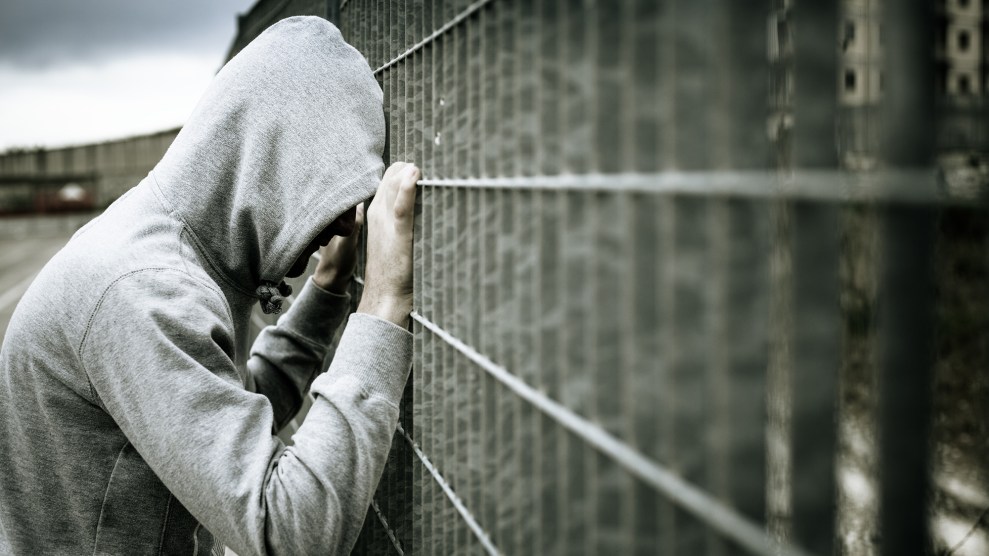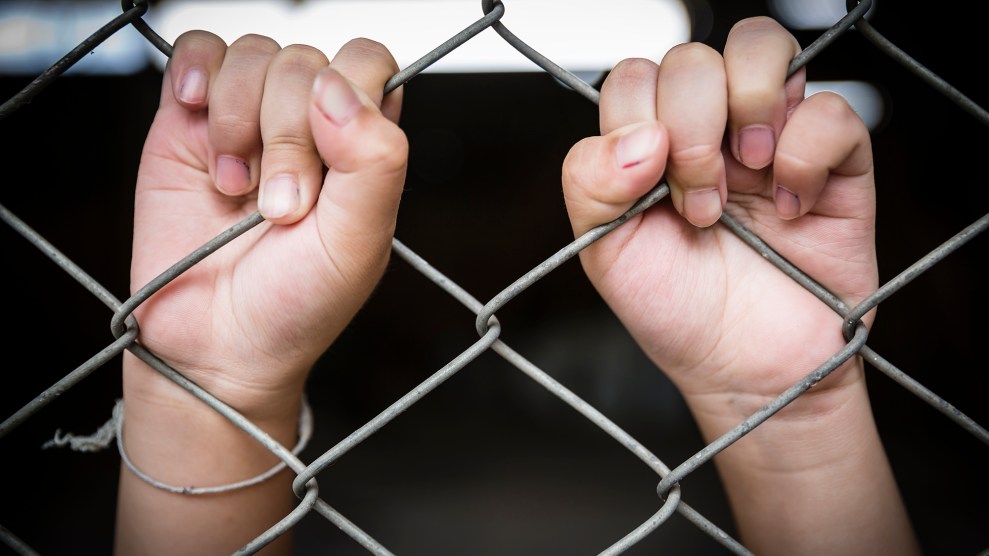
zodebala/Getty
In 2016, California’s state agency for juvenile justice seemed to be experiencing an upward swing. After more than a decade of court monitoring, mandated as part of a lawsuit over the abuse of youth detainees, poor medical care, and a lack of rehabilitative programs, the state boasted that conditions in its juvenile detention facilities had drastically improved. The agency had adequately come into compliance with the terms of the lawsuit settlement, a state court judge ruled, which meant monitoring by the court-appointed special master would finally end. The Division of Juvenile Justice, as the state’s corrections secretary put it at the time, had “transformed itself into a national leader run by a staff that believes in rehabilitation.”
Court monitoring, which examined whether juvenile detention facilities were keeping detainees safe and improving their educational and mental health services, officially ended after February 2016. But in the three years since then, what has changed?
There are some bright spots: The agency’s population of incarcerated youths has continued to fall, down to about 650 people currently compared with more than 10,000 in the mid-1990s. But a new report, published Tuesday by the Center on Juvenile and Criminal Justice, suggests their situation is still pretty grim, and that violence in these facilities has gotten a lot worse since court oversight ended. The report is based on data from the Division of Juvenile Justice and other government agencies as well as interviews with detainees and staffers. Here are some of the most disturbing findings:
- Beatings skyrocketed
: From August 2017 to July 2018, people held in California’s four state juvenile detention facilities were 49 percent more likely to be assaulted than they had been during the final year of court monitoring, according to the report, which cites data from the California Department of Corrections and Rehabilitation. Detainees were especially likely to get jumped during the intake process or if they’d been accused of a sex crime—something that could put them on the bad side of other detainees. Since 2016, when the monitoring ended, about one-third of detainees have been directly involved in a violent incident each month, the researchers found. “I watched these two kids get beat up, kicked in their face, get stomped out,” one detainee told the researchers. The rate of detained youths involved in riots, meanwhile, spiked 13 percent in the one-year period ending in July 2018 compared with the last year of court monitoring. The report blames a host of factors, from a shortage of staffers at nighttime to a lack of privacy in open dormitories and bathrooms. When violence breaks out, the researchers found, facilities often put detainees on lockdown, which means less access to school, religious services, or other programs.

Data shows an increase in violence at juvenile detention facilities
Center on Juvenile and Criminal Justice
- Staffers were much more aggressive: Use of force by Division of Juvenile Justice employees increased threefold from the yearlong period when court monitoring stopped to the yearlong period ending in mid-2018—up to roughly 15 incidents each month per 100 youths, according to the report. O.H. Close, a juvenile detention facility in Stockton, ranked eighth for use-of-force incidents in the entire California prison system, including maximum security adult prisons, the researchers found, citing an investigation by an inspector general. In fact, youth detainees in the four juvenile state facilities are now 20 times more likely than adult prisoners to have experienced use of force by staffers. The researchers said nearly every young offender interviewed for the report could recount experiencing or witnessing such an incident: staffers kicking the legs out from under a detainee or putting him in a headlock during a strip search, sticking fingers in someone’s food, or deploying pepper spray. Citing the inspector general’s analysis, the report says 45 percent of reported use-of-force incidents were out of compliance with the agency’s policies and that staffers sometimes tried to cover up their alleged misbehavior.

Data shows an increase in staff use of force at juvenile detention facilities
Center on Juvenile and Criminal Justice
- Suicides spiked: From August 2015 to July 2016, as the court monitoring was winding down, these state facilities saw three attempted suicides. After the monitoring ended, that figure jumped to 10 during the one-year period from August 2017 to July 2018, the researchers found. In total, there have been 28 attempted suicides at these institutions since 2016, and more than two-thirds occurred at Ventura Youth Correctional Facility. Detainees interviewed for the report complained that their medical needs often weren’t met, that it could sometimes take too long to see a nurse, and that their symptoms were not always taken seriously. “If you weren’t bleeding or dying, you wouldn’t get medical attention,” one detainee told the researchers. Many youths held in these facilities suffered trauma as kids, and the researchers argued in the report that counseling should be offered to a broader segment of the detained population.
In response to questions about the uptick in violence, staff use of force, and suicides, California’s Department of Corrections and Rehabilitation defended the juvenile justice agency. “While we acknowledge that the Division of Juvenile Justice (DJJ) works with some of California’s most challenged youth, DJJ has been on the frontline of reforming the way juveniles serve their time through education, programs, effective treatment and mental health services,” Ike Dodson, a spokesman, said in a statement to Mother Jones. The detainees range in age from 11 to 25 but are mostly 17 to 19. All are confined for serious or violent crimes.
Don Specter, an attorney at the Prison Law Office who worked on the lawsuit that led to court monitoring, said his team had not seen an increase in complaints about these juvenile facilities since the monitoring ended. He had not yet reviewed the report by the Center on Juvenile and Criminal Justice but said that if the numbers on increasing violence and use of force were true, “it would be surprising and concerning.”
In January, Gov. Gavin Newsom announced that he plans to move the Division of Juvenile Justice from the corrections department to the state’s Health and Human Services Agency. Dodson said this change would allow the juvenile justice system to “build on the progress of the last decade and to continue to provide youth the treatment and skills that will allow them a successful transition back to their communities.” But some health care professionals and juvenile justice advocates have expressed skepticism of the plan, saying they worry the shift will merely be symbolic.
















